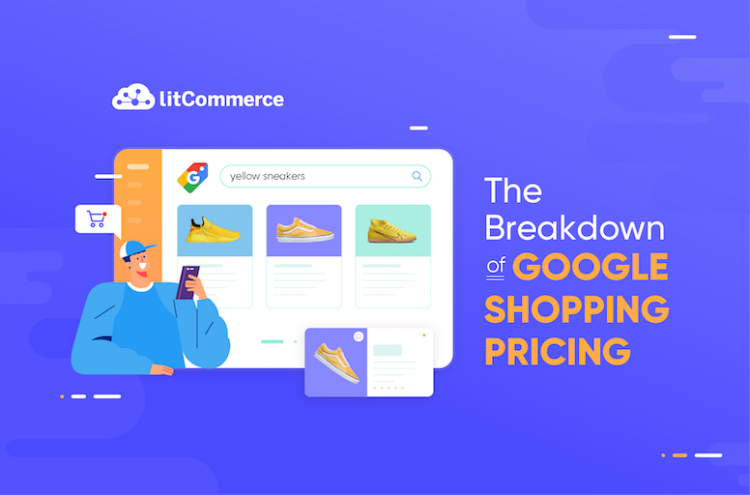Google Shopping is an online shopping search engine that allows users to browse, compare, and purchase products worldwide. This special marketplace has an incredibly high buying-intent audience, which makes it an absolutely potential sales channel. Furthermore, Google Shopping pricing is extremely tempting to e-sellers, but have you got the latest details?
If you are new to Google Shopping and searching for its 2025 selling fees, we’ve got your back! In the following sections, you are about to discover:
Let’s dive into it now!
Understanding more about Google Shopping:
- A Complete Review about Google Shopping platform for Sellers.
Google Shopping Pricing: A Detailed Breakdown
Google Shopping is one of the most popular online marketplaces, offering millions of products from thousands of online retailers. As a seller, understanding how Google Shopping pricing works is crucial to optimizing your sales and profitability on the platform. With its extensive reach and easy-to-use interface, Google Shopping provides a powerful tool for businesses to showcase their products and connect with potential customers.
The breakdown of Google Shopping pricing below consists of 5 major categories:
- Subscription fees
- Insertion fees
- Pending charges
- Shipping fees
- Google ads expenses
Now, why don’t we investigate each a bit further?
You can check out this article on how to rank for Google Popular Products and leverage your online business.
Subscription fees
When you sell on Google Shopping, you don’t have to pay subscription fees. Detailedly, Google pricing rules have applied the non-subscribing since its launch in 2002. Thus, compared to other selling fees from eBay, Amazon, and Etsy, Google Shopping pricing surely has a winning point over its subscription-free business model.
Fees to list on Google Shopping
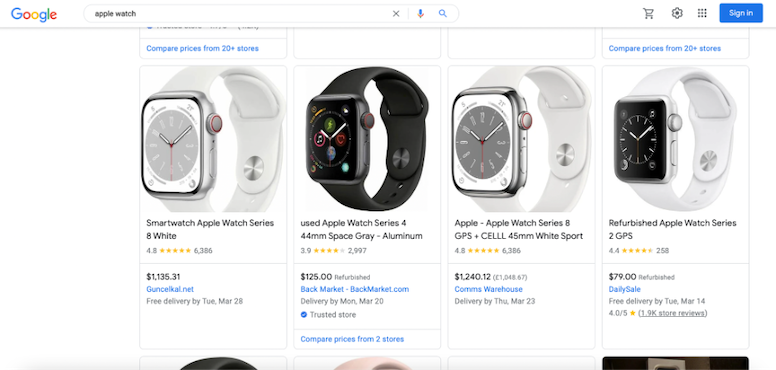
Interestingly, no insertion fee required is another perk when selling on Google Shopping for merchants.
So, with no cost to list on Google Shopping, will a seller get any quantity limitation? The answer is a solid no. As you have joined the Google Merchant Center, there is no limit on how many products you can list. Without an insertion fee charged, selling on this marketplace is truly a sweet spot for e-retailers.
And the best part about listing your products on Google? You can then have unlimited free listings with corresponding features in Merchant Center!
Pending charges
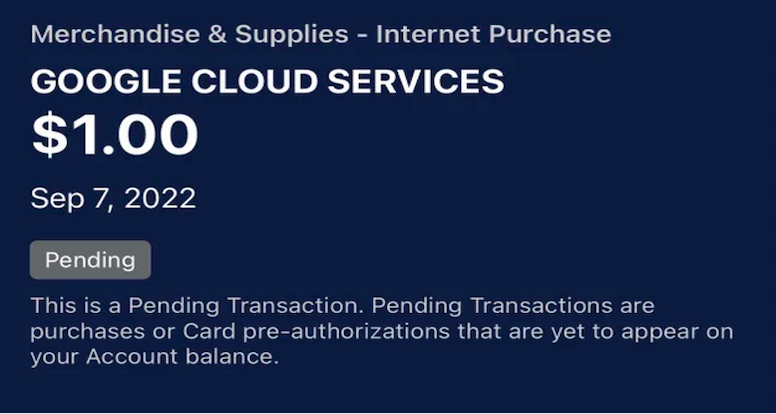
A pending charge refers to a temporary $1 holding for an unprocessed transaction, which returns as soon as it goes through. According to the Google Shopping price rules, a pending charge is responsible for validating an account. This rule applies to both sellers and ordinary Google users.
Shipping fees

Does Google Shopping pricing charge sellers shipping fees?
Based on the Google shipping rulebook, shipping costs are determined by sellers, not the platform. Besides, the platform will not charge any money, either.
On the other hand, carriers and third-party order fulfillment services will charge sellers based on their requirements and needs. These factors can be the item’s weight, destination, or special product type.
Usually, every carrier will have its own policies to clarify shipping conditions and costs. Additionally, international shipping may be more pricey and complex than domestic one. Also, it is crucial that your item sold is legal and your selling policies comply with territorial regulations.
Speaking more of the shipment aspect, a Google retailer must submit his fees to Merchant Center. Specifically, the submitted cost must resemble one placed on his selling websites.
In case you cannot provide an accurate shipping fee, Google recommends putting an overestimated one.
Google ads pricing
Briefly, we have discussed certain Google Shopping prices, among which subscription, insertion, and shipping fees are free. Does Google Shopping actually make money? The answer is yes. This platform makes its profit from providing ad services. So, how much is Google ads pricing?
● Google ads PPC model (Pay-per-click)
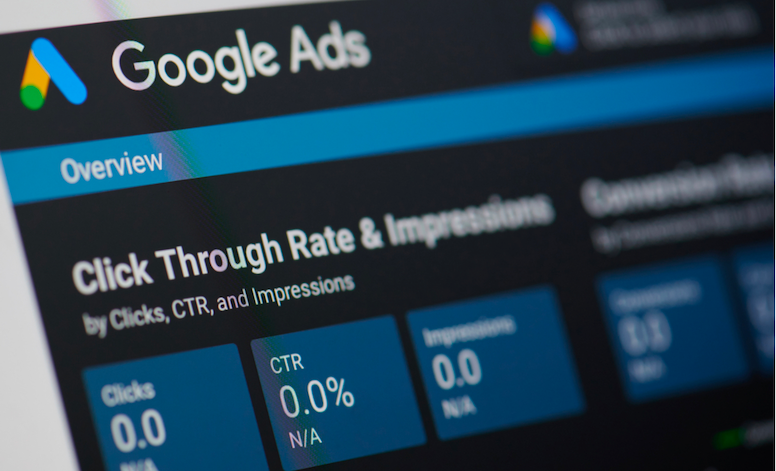
First and foremost, it is crucial to figure out what Google ads mean and how they work. In general, Google ads is a Google Pay-per-click Advertising platform. Particularly, Google advertisement charges no fees for ad placement. Nonetheless, Google will charge every time someone clicks on your ads. That’s how Google Shopping pricing actually operates and earns money.
Now, let’s talk about the Google ads pricing mechanism. If you have placed a Google ad, you probably notice the ad auction. This begins whenever somebody searches for something on the Google search engine. If a searched query involves bidding keywords, the most eligible ads will go to the auction.
● Ads ranking
Continuing on Google Shopping pricing and ads charges, here is a closer look at ads rankings. When placed on Google, your ad’s position is determined by bidding rates and ad quality score.
- Bidding: A bid refers to the money you are willing to pay for a specific action, which is a click on Google ads in our case. The higher your bids are, the greater your chance of high rankings becomes.
- Ad quality score: The ad quality score is decided by three factors, which are the user’s experience, CTR (Click-through rate), and keyword relevance. Similar to bidding, if your ad quality score is higher than those of competitors, congratulations! You may get some advantages over other retailers.
Shortly, your ranking depends on: Your maximum bid x ad quality score
For instance: Your maximum bid is $8, and your ad quality score is 9. Then, you will have a 72-ranking score. Ads with higher ranking scores will show up first.
● Google ads pricing calculator

Calculating Google ads fees: Take 10% of your ranking score and add $0.01
Suppose that you have a 72-ranking score, your charge for each click on Google ads would be: 10% x 72 + $0.01 = $7.21
Usually, Google ads pricing will charge about $1 to $3 for each click. Nonetheless, this highly depends on your industry, products, target audience, and budget. Some would even go for $50 per click, especially in law or insurance. That’s also the last section in our breakdown of Google Shopping pricing.
Google Shopping Pricing: What Are The Tools for Google Merchants?
Apart from the detailed analysis of Google Shopping pricing, why don’t we discover tools offered by the house? Here are three Google pricing tools to support online merchants.
Price Tracker
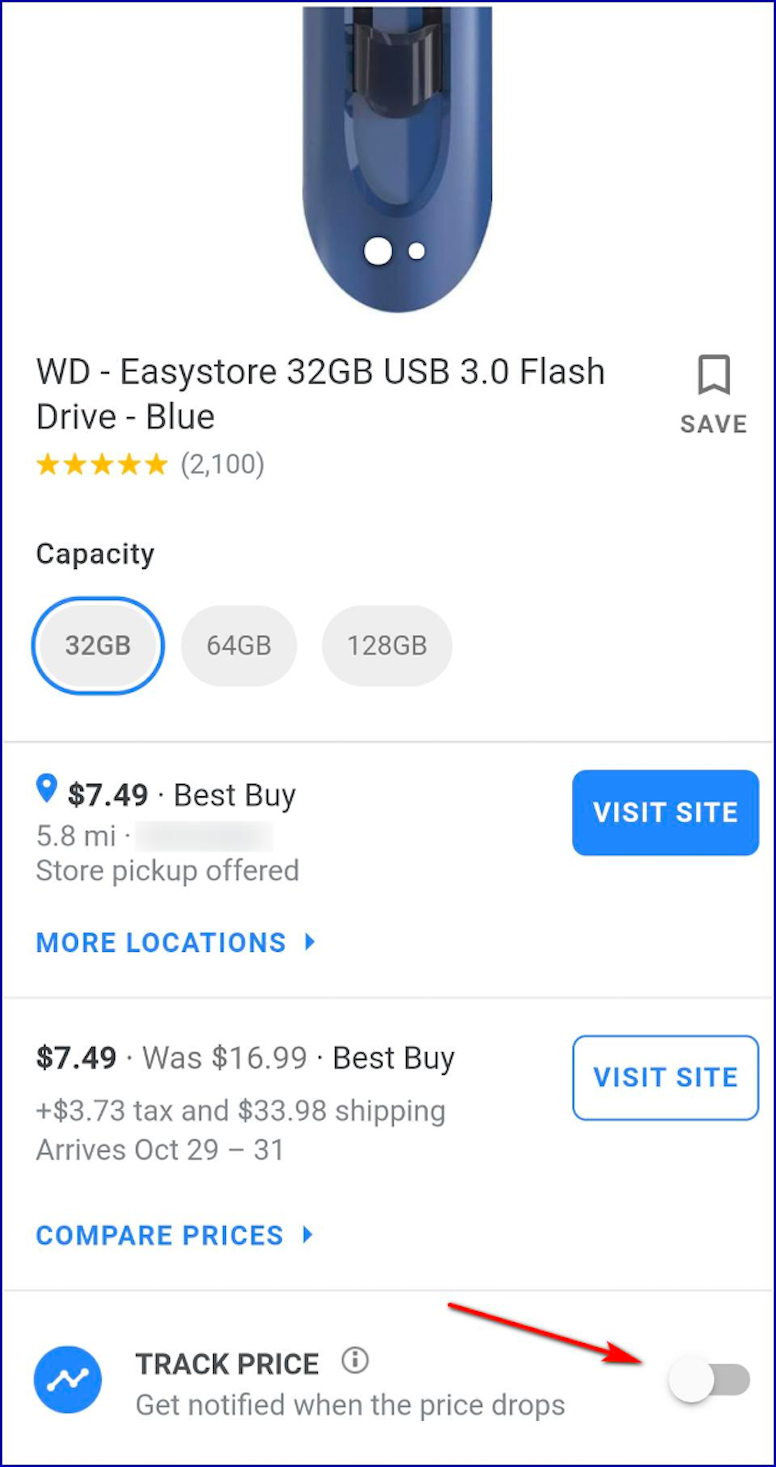
The price tracker Google offers can help e-sellers keep track of product pricing and their pricing history (if available). Besides, this tool is extremely useful for tracking your competitors’ pricing and adjusting your current one. As you use it, there will be less risk of putting on the wrong pricing or missing out on the competition against other sellers.
Nonetheless, there are some notes to it. In accordance with Google price drop guidelines, you can use it to monitor Google Shopping products whenever you find the “Track price” option. However, this tool is only accessible to U.S. sellers.
How to turn on Google price tracking in search:
- Open the Google app or browser
- Look up a certain product
- Scroll till you find its module
- Tap on Google Tracking
How to turn on Google price tracking in Shopping Tab:
- Open the Google app or browser
- Search for a certain product
- Direct to the Shopping tab and choose an item
- Turn on the Price track
Note: You can turn off the price tracker anytime you want. Also, if you want to receive Google Shopping price alerts, turn on notifications, and register for emails. That may help to keep up with the market-shifting pace and manage your pricing more effectively.
Pricing Rules
Pricing rules are considered powerful tools which allow you to update product pricing sold through Buy on Google automatically. Generally, you can use Pricing rules to change product pricing over a period of time. Furthermore, your applications will pause once it reaches the ending time, and the original pricing will display as usual.
When setting rules for Google Shopping pricing, remember to limit the afterward effects. You can conduct that either by putting on maximal or minimal pricing changes.
Google Shopping Price Benchmark
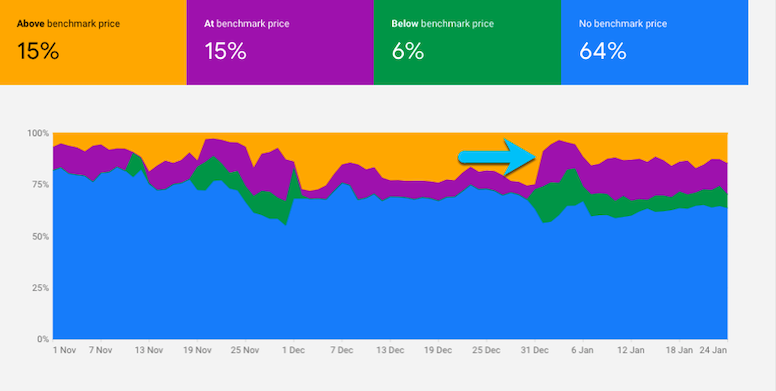
Google Shopping applies price benchmarks for ads to support its merchants in implementing more proper strategies and pricing adjustments if needed.
Notably, the benchmark shows how other retailers price the same products you sell globally or domestically. Besides, when using this Google price comparison tool, sellers can estimate general product pricing and figure out the best prices for advertisement.
Particularly, here is how the Google price comparison tool can benefit e-sellers:
- Bidding: Seeing competitors’ product pricing helps you decide whether to lower or upper your current bidding rate. As mentioned above, Google ads operate in the auction style. Knowing exactly how much you should bid will either save you lots of money or gain more sales.
- Sales performance diagnostics: Performance diagnostics come into the scene if sellers have adjusted their pricing. With different pricing levels and detailed sales performance analysis, you will then be able to track and perhaps alternate in fierce eCommerce competition.
- Strategy moderation: Google benchmark gives merchants an overall understanding of customers’ demands of price points (globally or domestically). Consequently, such an indication likely contributes to a merchant’s final decision over his pricing.
Google Shopping Pricing – FAQs
- 1. How does Google Shopping work?
Google Shopping does not sell directly to consumers. Instead, it creates a space for advertisers and sellers to feature their products, which are searched, browsed, and purchased by shoppers. Also, when shopping on Google, consumers can go to the store’s website or buy it on Google. This marketplace requires no subscription, insertion fee, or initial setup cost.
- 2. How much does it cost to advertise with Google?
Google ads only charge when someone clicks on your ad (Pay-per-click model). Therefore, it depends on how many clicks your ad gets. Usually, you may pay $1 to $2 for one click. If you sell in industries such as law or insurance, the charges can go as high as $50 for every ad click.
- 3. Does Google Shopping charge commission?
NO, Google Shopping does not charge commission, and it is probably one of a few commission-free models. Instead, Google Shopping makes money from its ads.
Fees to Sell on Google Shopping – Verdict
In summary, Google Shopping pricing policies are pretty appealing to e-sellers with no subscriptions, insertion, and shipping fees. However, when selling on one of the best selling platforms – Google, you need to implement strict advertising strategies to achieve desired sales target and make the most of your money spent.
If you want to discover more about online marketplaces and eCommerce platforms, stay tuned to LitCommerce Retailer Blog and join our Facebook community. Or should you have any interest in multichannel selling, try out LitCommerce’s solution and kick off the global race. Last but not least, don’t hesitate to consult with us when you have any questions relating to eCommerce. We are honored to give a helping hand!

